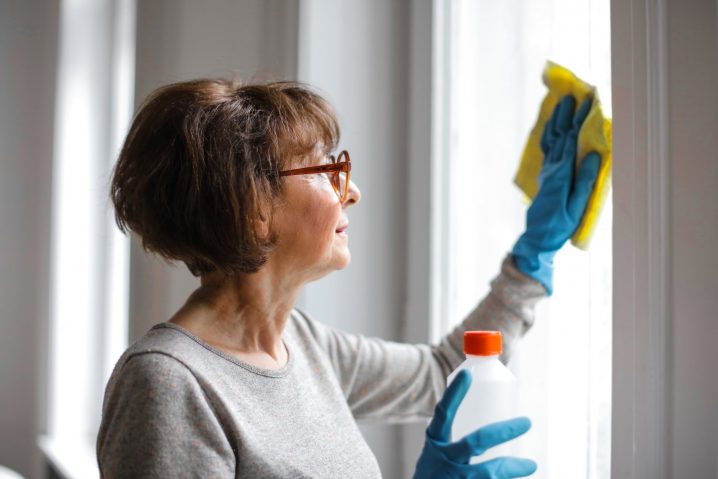There are some old wife’s tales that there is no point in believing and then there are some that are worth listening to. When it comes to cleaning your house with vinegar, this is a tale worth listening to. Vinegar is an excellent cleaning substitute, not only is it very cheap and accessible, there are also no harsh chemicals that can result in your skin becoming damaged and sore. With all this in mind, there are some parts of your home where using vinegar will work better and some areas that should be avoided. So, here we uncover when to use vinegar to clean.

Floor Cleaner
Whether you have hard wood or tiled flooring, vinegar can make an excellent cleaner. Its acidity effectively breaks down the dirt and grim that can become embedded in wood, tiles and grout without damaging the quality of your flooring. It is much more gentle than disinfectant alternative, so you don’t need to worry about it pulling out any colour or grout. Be careful of using the cleaner on natural stone such as granite or marble, as using vinegar can scratch these surfaces. To know more, you can read Susan’s blog A Clean Home.
Windows
There is little better alternatives than white vinegar and newspaper on glass and windows. The newspaper sounds a bit odd, but it helps with reducing the streaks. When you use traditional glass cleaner, you’ll find that it will often leave streak marks, especially in the corners of frames. You’ll also find that if you use a micro fibre cloth, fibres will be left on the glass. If you use vinegar and newspaper, both of these problems are eliminated, and you’ll be left with streak free beautiful windows.
Mattresses
Mattresses are notoriously difficult to clean and freshen up, mainly because you can’t fit them in the washing machine and taking them to a dry cleaner is a no go. Put a small amount of vinegar in a spray bottle with some essential oils, such as tea tree or lavender, spray it on the mattress and leave it to dry. You’ll find that your mattress smells far better and if you use lavender, you’ll get to sleep easier too.
Carpets
There are some stains that are difficult to remove from carpets and some cleaning chemicals are so harsh, they’ll pull the colour straight out of the fibre. If you have a pesky stain that you want to get rid of, then vinegar can be excellent way of doing this. Simply mix it up in a pot with some baking soda to make a paste and apply it straight to the stain. You will need to wait a while before the paste works, but once you have left it for a suitable amount of time, you’ll be able to mop it up and see the stain has been removed.
Cutting Boards
Whether you use plastic or wood cutting boards, they can be difficult to clean. Wooden boards especially always feel as though there is some residue left after you clean them. To get rid of this slimy residue, simply fill up a spray bottle with water and vinegar and spray it on the wood and leave it to dry. You’ll find that it will also remove the cooking smells and keep the residue at bay.
Sticky Label Reside
Whether it is the label on a new pair of shoes, or you are trying to get the label off a glass jar, the sticky residue can be difficult to remove, even with scrubbing. One of the best and fastest ways to remove this residue is with vinegar. Simply put some on a cloth and rub on the affected area. You’ll find that it removes the residue pretty much instantly.
Water Rings
Remove water rings from wood with vinegar, but make sure that it isn’t on a waxed surface. Simply use equal parts malt vinegar and vegetable oil and rub it onto the affected area. You’ll find that those awful marks disappear right away and will leave your table looking fresh and clean.
Vinegar really is an excellent all-round cleaner; it is inexpensive and easily accessible. You are able to clean most surfaces effectively with it. You can use it on its own with your windows or you can mix it with water or other household ingredients to make it into pastes and sprays. Make sure you keep vinegar away from natural stone surfaces as it may scratch it and don’t use it on waxed wood as you’ll find it will leave the surface cloudy.



